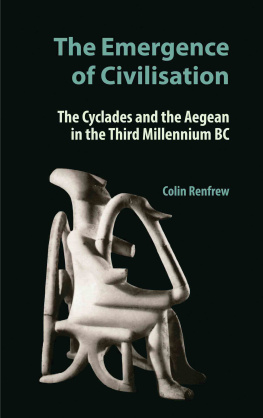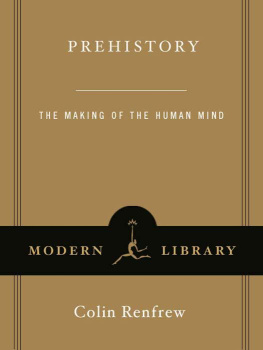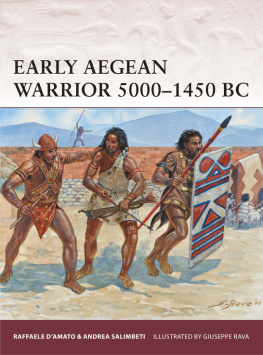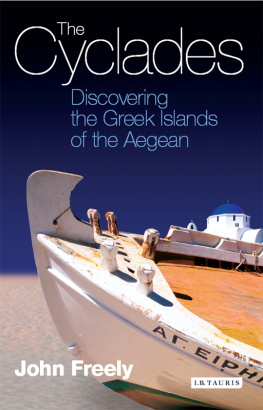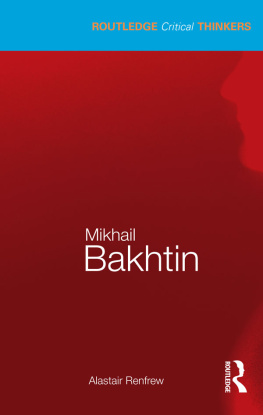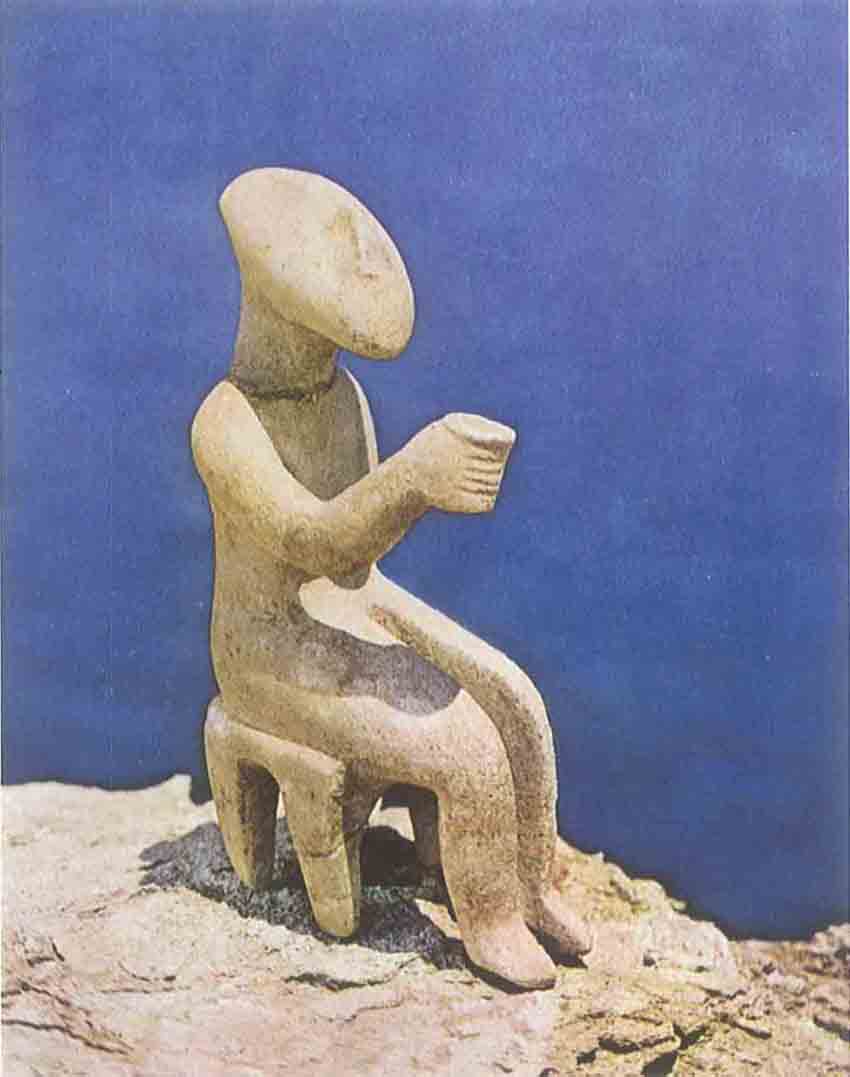
The Emergence of Civilisation
SEATED MARBLE FIGURINE OF THE KEROS-SYROS CULTURE
The Emergence of Civilisation
The Cyclades and the Aegean in the Third Millennium BC
COLIN RENFREW
This edition published in the United Kingdom in 2011. Reprinted in 2017 by
OXBOW BOOKS
The Old Music Hall, 106108 Cowley Road, Oxford OX4 1JE
and in the United States by
OXBOW BOOKS
1950 Lawrence Road, Havertown, PA 19083
The title The Emergence of Civilisation was originally published in 1972 by Methuen
Colin Renfrew 1972, 2011
Paperback Edition: ISBN 978-0-97740-946-4
Digital Edition: ISBN 978-1-78570-773-5 (epub)
Mobi Edition: ISBN 978-1-78570-774-2 (Mobi)
A CIP record for this book is available from the British Library
Cataloging data available from the Library of Congress
All rights reserved. No part of this book may be reproduced or transmitted in any form or by any means, electronic or mechanical including photocopying, recording or by any information storage and retrieval system, without permission from the publisher in writing.
For a complete list of Oxbow titles, please contact:
| UNITED KINGDOM | UNITED STATES OF AMERICA |
| Oxbow Books | Oxbow Books |
| Telephone (01865) 241249 | Telephone (800) 791-9354, Fax (610) 853-9146 |
| Email: | Email: |
| www.oxbowbooks.com | www.casemateacademic.com/oxbow |
Oxbow Books is part of the Casemate Group
Text type 11 pt Minion Pro
Display type 18/12 pt Myriad Pro
To the Memory of V. Gordon Childe
Wonders are many on earth and the greatest of these
Is man, who rides the ocean and takes his way
Through the deeps, through the wind-swept valleys of perilous seas
That surge and sway.
He is master of ageless Earth, to his own will bending
The immortal mother of gods by the sweat of his brow,
As year succeeds to year with toil unending
Of mule and plough.
He is lord of all things living: birds of the air,
Beasts of the field, all creatures of sea and land
He taketh, cunning to capture and ensnare
With sleight of hand;
Hunting the savage beast from the upland rocks,
Taming the mountain monarch in his lair,
Teaching the wild horse and the roaming ox
His yoke to bear.
The use of language, the wind-swift motion of brain
He learnt; found out the laws of living together
In cities, building him shelter against the rain
And wintry weather.
There is nothing beyond his power. His subtlety
Meeteth all chance, all danger conquereth.
For every ill he hath found its remedy,
Save only death.
FROM SOPHOCLES ANTIGONE
TRANSLATED BY E. F. WATLING
List of Illustrations
FIGURES
| FIG. 0.1 | Important excavated sites of the third millennium BC in the Aegean |
| FIG. 1.1 | Contrasting density of settlement atTeotihuacan andTikal in Mesoamerica. |
| FIG. 1.2 | The activities of man: diagram. |
| FIG. 1.3 | Anthropocentric view of the activities of a man: diagram. |
| FIG. 1.4 | The developing environment of a human culture and the life-space of a child and adult, in terms of topological psychology. |
| FIG. 1.5 | Insulation of man from nature by artefacts: diagram. |
| FIG. 2.1 | Six kinds of interaction: diagram. |
| FIG. 4.1 | Mans created environment: entyrance to the palace at Knossos. |
| FIG. 4.2 | Vegetation zones of Greece and Extent of Minoan-Mycenaean civilisation. |
| FIG. 4.3 | Clay tablet from Knossos, inscribed in Minoan Linear B script. |
| FIG. 4.4 | The Middle Minoan palace at Mallia. |
| FIG. 5.1 | Complete village plan of the later neolithic period (Cscioarele). |
| FIG. 5.2 | Evolution of the burnished bowl in Chios. |
| FIG. 5.3 | Aegean later neolithic bowls. |
| FIG. 5.4 | Regional groups of pattern burnish pottery in the Aegean. |
| FIG. 6.1 | Early Minoan Pyrgos ware. |
| FIG. 6.2 | Early Minoan Aghios Onouphrios. |
| FIG. 6.3 | Pottery vessel assigned to the Early Minoan III period. |
| FIG. 6.4 | House blocks of the early Aegean. |
| FIG. 6.5 | Plan of the Early Minoan II settlement at Phournou Koriphi, Myrtos. |
| FIG. 6.6 | Incised stone pyxis lid from Mochlos. |
| FIG. 6.7 | Ivory seals from Platanos. |
| FIG. 6.8 | Early Minoan gold jewellery from Mochlos. |
| FIG. 6.9 | The hypogeum at Knossos. |
| FIG. 7.1 | Pottery sauceboats from Lerna. |
| FIG. 7.2 | Tankards of the Tiryns culture. |
| FIG. 7.3 | Comparison of pottery from Poliochni, Manika, and lasos. |
| FIG. 7.4 | Early Helladic houses. |
| FIG. 7.5 | Major buildings of the Korakou culture. |
| FIG. 7.6 | Aegean rock-cut tombs of the third millennium bc. |
| FIG. 7.7 | Clay sealings from the House of the Tiles at Lerna. |
| FIG. 7.8 | The Burnt House at Sitagroi. |
| FIG. 8.1 | Pottery of the Troy I culture. |
| FIG. 8.2 | Pottery of the Troy II culture. |
| FIG. 8.3 | Jug from Troy IV. |
| FIG. 8.4 | The early bronze age town at Thermi in Lesbos. |
| FIG. 8.5 | The Great Treasure from Troy. |
| FIG. 9.1 | The Cycladic islands. |
| FIG. 9.2 | Close-proximity structure for the Early Cycladic cemeteries (presence-absence similarity coefficients). |
| FIG. 9.3 | Close-proximity structure for the Early Cycladic cemeteries (percentile similarity coefficients). |
| FIG. 9.4 | Test for geographical patterning in the the close-proximity structure for the Early Cycladic cemeteries. |
| FIG. 10.1 | Bowls of the Grotta-Pelos culture. |
| FIG. 10.2 | Grotta-Pelos forms from Phylakopi and Grotta. |
| FIG. 10.3 | Vessels from the Grotta-Pelos cemeteries. |
| FIG. 10.4 | Comparison of shapes from lasos and Grotta-Pelos graves. |
| FIG. 10.5 | Distribution of Cycladic marble beakers. |
| FIG. 10.6 | Distribution of KumTepe lb bowls. |
| FIG. 11.1 | Forms of the Keros-Syros culture. |
| FIG. 11.2 | Forms of the Kastri group of the Keros-Syros culture. |
| FIG. 11.3 | Metal types from the Chalandriani cemetery. |
| FIG. 11.4 | Fortified strongholds of the Keros-Syros culture. |
Next page
